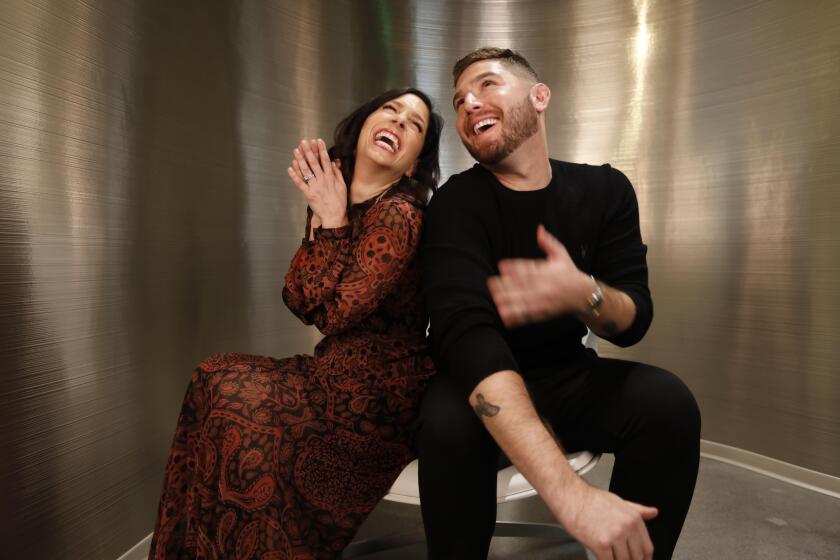Study shows viewers want more representation for those with disabilities
Historically, able actors who play characters with disabilities have been rewarded for their performances with high box office returns, critical acclaim and even Academy Awards. But a recent study shows that viewers are getting tired of the lack of representation for the disability community on screen. Authenticity is the new frontier.
Findings from the Ruderman Family Foundation’s just released effort, “Disability Inclusion in Movies and Television,” show that around half of entertainment consumers prefer authentic portrayals featuring actors with disabilities when viewing disability story lines.
More encouraging to the foundation, which conducts research advocating for the disability community, is that those in favor of seeing disability on screen tend to be younger and more connected to newer media such as streaming services.
‘This Close,’ starring Shoshannah Stern and Josh Feldman, made history as TV’s first deaf series. As it enters Season 2, it has the makings of a breakout hit.
Of participants age 16 and older, the study found that 55% would like to see characters with disabilities portrayed authentically. The amount those subjects spend on entertainment, when adjusted for the larger population, is estimated at $10.4 billion per month for U.S. households.
“We see the belief that playing a disability is great acting,” said Jay Ruderman, president of the Boston-based foundation, in an interview last week at the Culver Hotel in Culver City, mentioning that many actors have won Oscars for playing disabilities. “We felt that the next step was to show the buying power of the disability community and all the money that studios are leaving on the table by not showing disability authentically.”
Part of the issue, Ruderman points out, is that the disability community is often left out of conversations about diversity and representation. Films such as “Black Panther” and “Crazy Rich Asians” demonstrated that movies by and about historically underrepresented groups could become blockbuster hits worldwide. The Ruderman report aims to show that sizable audiences exist for films featuring actors with disabilities.
“It’s important — it’s the right thing to do,” noted Dr. Hanna Shaul Bar Nissim, deputy director of the foundation. “But at the end of the day, the entertainment industry is a business, and we really wanted to look at the data objectively to see, is there a bottom line here?”
One actor with cerebral palsy who has broken the industry’s ability barrier, “Breaking Bad’s” RJ Mitte, believes that exclusion for the disability community traces back to deep-seated stigmas. Even after landing a groundbreaking, mainstream role as antihero Walter White’s teenage son, Mitte still struggled against being “defined by” his disability.
“A lot of people view disability as an illness, as a weakness, as something that we have to cure and overcome,” Mitte said in an interview last week.
While results indicated that about half of households would subscribe to a content distributor committed to characters with disabilities and/or actors with disabilities, in reality, not much has changed since a 2016 study revealed that less than 2% of all performers on top TV series have disabilities — a particularly abysmal statistic considering that people with disabilities make up about 20% of the American population, according to a recent report by the Census Bureau.
The Ruderman family’s most recent study shows, however, that viewers rank “diversity” in the top five most valuable characteristics for content when disability is included in the definition. As it should be, Mitte says.
“Disability doesn’t care what your skin color is, where you grew up, how much money you have,” Mitte said. “It doesn’t care about all these things that define people because it’s blind to that. It affects everyone across the board.”
According to actor Danny Woodburn, who co-authored the 2016 report, improvement begins in the casting process. Woodburn considers himself lucky to have played roles in projects such as “Seinfeld” and “Watchmen,” since parts are scarce for little people like himself. But before casting calls can be more inclusive, Woodburn says they must first become accessible.
“At least 50% of the auditions that I’ve been through in my career have probably been inaccessible on some level, be they in a studio or Hollywood bungalow,” Woodburn said. “We are also unconsciously disregarding the fact that anybody in wheelchairs might be called in for that job.”
Offering hope was that participants age 34 or younger were more open to disability storylines. Ruderman attributed the trend to decreasing social and institutional segregation, while Woodburn added that the advent of new communication tools, such as social media, can also accomplish much in terms of acceptance.
“It’s easier to dispel myths using social media,” Woodburn said. “This generation is very connected to social media, and it has been an incredibly impactful space for the disabled community to advocate for themselves.”
Woodburn is optimistic that studies such as “Disability Inclusion in Movies and Television” have the power to affect change, though he’s not expecting any major shifts to occur overnight. He knows how the industry works: A-list, able actors will continue to land disability roles as long as their names are more bankable. But they could help performers with disabilities rise to a similar status.
“That person who gets brought in, I feel it incumbent on them to create more opportunities for the people whose job that person just took,” Woodburn said. “If you have a lead in a film who, say, is blind or deaf, then make sure there are three other people on that film who share that element.”
Nissim already sees progress from able talent such as Mitte’s former “Breaking Bad” costar Bryan Cranston, who received heat for playing a man with quadriplegia in 2017’s “The Upside.” Cranston welcomed the criticism, telling the Press Assn. that “a conversation started is always a good thing,” in a small step toward greater awareness.
“Now we have this new elevation of information, and we can actually present it in a way where people and the general public can understand that something needs to change,” Mitte said. “And they are hungry for change.”
More to Read
Only good movies
Get the Indie Focus newsletter, Mark Olsen's weekly guide to the world of cinema.
You may occasionally receive promotional content from the Los Angeles Times.












